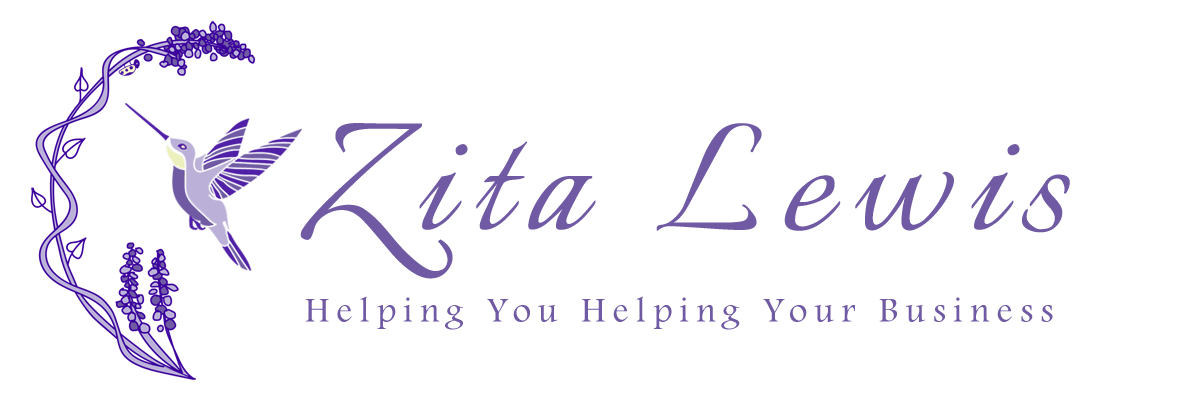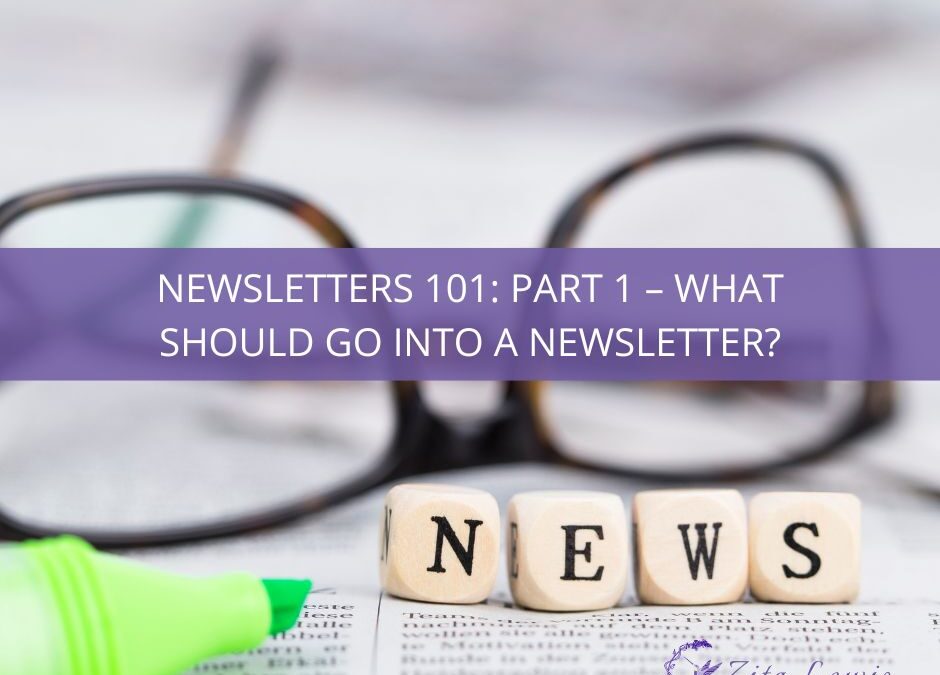Email newsletters are often heralded as an essential marketing technique for small business owners because they’re so good at getting you in front of your audience. A subscriber joins your mailing list for a reason – they’re interested in what you have to offer, whether that’s free lead magnets, informative content, or promotional offers. As they’re already engaged with what you do, newsletters are a fantastic way to nudge them further down your sales funnel into buying a service or product from you.
Newsletters are also a fantastic way to keep in touch with your current or past clients, letting them know of any updates or changes to your services and keeping you in their minds for future opportunities.
So that’s two reasons why email newsletters are great for small businesses but I’ve been asked many times at networking events “I don’t know what to put in my newsletter! What do you suggest?”, so in this blog, I’m going to share with you my answer.
Informative and educational newsletters build rapport
As with your website blog posts, any content you send out to your audience should be informative and educational. When you’re sharing information, your audience doesn’t know, or have been struggling to understand, you’re perceived as an authoritative figure – someone who ‘knows their stuff’. When one of your subscribers has a problem related to what you do and is wondering where to look for advice or help, they’ll remember that you know all about this stuff and get in touch.
At least that’s the idea. But you can go a step further in making that happen by ensuring that your content is also educational. If your readers go away believing they have learned something or something they already know has been reinforced as true, they will feel gratitude toward you. Those positive vibes go a long way in helping you build a rapport with your audience and enable them to trust you enough to become a paying customer.
Ways you can include informative and educational content in your newsletters are:
- Sharing a recent blog post but offering an additional comment or thought on it which encourages your audience to visit your website to read it
- Embedding a video/reel where you talk directly to your audience about a topic
- Sharing the answer to a frequently asked question
- Sharing recent industry updates, legislative changes, etc
Updates about you and your business allow a personal touch
It’s also a good idea to allow some glimpses into the person behind the business in your emails too. The best way to find your tribe and build rapport with your audience is by allowing your personality to shine through in your website copy, blogs, and email newsletters.
The best way to do this is to write your newsletter as if you’re having a direct conversation with your reader. It can be a good idea to imagine you both sitting at a coffee table having a natter. Use the same kind of language, tone, humour, etc that you would in person in your newsletter.
By giving personal updates about you and your business (but only what you’re comfortable sharing) it enables your audience to find common ground between you. For example, you both might have a love for rescue dogs (as I very much do!) and it’s these commonalities that build that rapport and trust needed for them to decide to spend money with you.
Aside from the language you use when giving these updates, you can also get your personality across in email newsletters by:
- Sharing behind-the-scenes photos
- Sharing photos of pets and other things that are important to you
- Embedding video content of you
- Sharing recent articles about you, testimonials, press releases, etc.
Share promotional offers in your newsletter but avoid being too salesy
Ultimately, the purpose of an email newsletter is to build rapport with your audience over a sustained period of time so that when they are ready to buy the particular product or service you offer, it’s you they have in mind to buy from.
A lot of business owners make the mistake of using newsletters as a sales tactic – rather than content they just email out their latest sales promotions or price list. In reality, this is no different to sending out cold emails and will usually have the same effect, a quick unsubscribe from your mailing list!
That doesn’t mean you can’t share offers and news about your services but they should never be the sole focus of a newsletter unless for a) a specific product/service launch that you genuinely believe your audience would be interested in and b) seasonal promotions such as Black Friday, Christmas, Valentine’s Day, etc. But don’t overdo it – one email is enough, it’s generally better to use your social media marketing for these kinds of offers.
A good way to share a promotional offer is to tie it in with the informative content you’re sharing. For example, if you’re a bookkeeper sharing content about the new Making Tax Digital changes, it’s fine to share a special offer to businesses to come to you for monthly bookkeeping because it’s pertinent, relevant and useful to them.
And that’s generally the key with email newsletter content. It should be pertinent and relevant to your audience and useful to them. If you keep to those general principles, you can’t go too far wrong.
I hope you’ve found part one of my Newsletters 101 blog series useful. Make sure you look out for part two where I discuss how to get your audience to open your emails and read your newsletters! If you’re looking for help creating newsletters or getting the marketing basics right with them, check out how my services can help.

